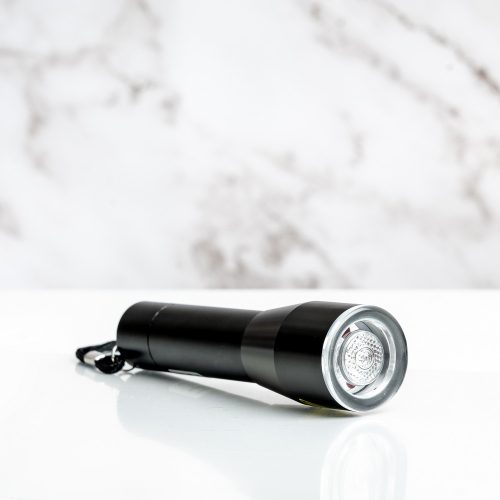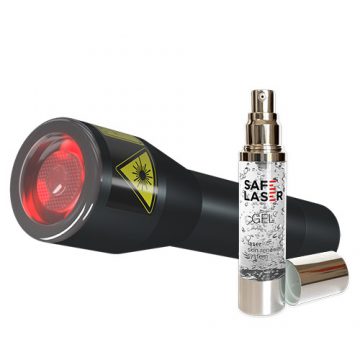Low-level laser therapy can ease irritation to the respiratory tract through many mechanisms. LLLT can help improve breathing in respiratory conditions, such as asthma, bronchitis, or a condition where the inflammation of airways is causing symptoms such as wheezing or coughing.
Bronchodilation – LLLT was discovered to enhance the relaxation of smooth muscle cells that line the airways. This is beneficial for people suffering from respiratory conditions such as COPD as well as asthma where bronchoconstriction leads to difficulty breathing.
Improved Blood Circulation – LLLT enhances vasodilation, microcirculation and blood flow in the lung. A better blood flow will transport nutrients and oxygen to inflamed tissue, which promotes healing and reduces inflammation.
The Enhanced Immune Response LLLT has been proven to alter the immune system by stimulation of cells called cytokines. It also improved phagocytosis – the process where immune cells consume and destroy pathogens. This may boost the immune system to fight respiratory infections, as well as reduce inflammation of the airways.
Reduced Mucus Prodution- LLLT can help decrease excessive airway mucus by promoting mucus clearing and reducing respiratory tract inflammation. This is especially beneficial to people suffering from chronic sinusitis and bronchitis where excess mucus contributes respiratory symptoms.
Alleviation of Allergic Responses- LLLT is being studied as a potential treatment for allergic nasal inflammation, also known as hay fever. The conditions are defined by inflammation in the nasal passages and sinuses due to allergens. LLLT decreases inflammation and improves immune function, which can help alleviate symptoms of allergies, including nasal obstruction, sneezing or itching.
Overall, safe Laser low-level laser therapy is a non-invasive, drug-free solution for managing inflammation in the respiratory system and symptoms, bringing relief and promoting better respiratory function. It's best to consult a physician prior to applying LLLT for respiratory issues. This will ensure that you are given the correct diagnosis and treatment. View the most popular safe laser 500 ár for more info including lágylézer vásárlás, orvosi lézer készülékek, lezeres kezeles, lágylézer kezelés, gyógyító lézer, lezeres kezeles, lágylézer kezelés, lágylézeres készülék, lágylézer kezelés árak, safe laser bérlés and more.

What Is Low-Level, Safe Laser Therapy (Lllt) Be Used To Be Used To Treat Ear Issues?
Low level safe laser therapy (LLLT) can help with a variety of ear problems through a variety of ways. The reduction of inflammation- LLLT's antiinflammatory properties can aid in reducing inflammation in the ear can or middle ear. LLLT is efficient in treating otitis externala (inflammation at the outer ear canal) and otitis media (middle ear infection of the middle ear) as well as other ailments.
LLLT assists in relieving discomfort in ear problems such as earaches, otitis and ear aches.
Enhanced Tissue Healing LLLT stimulates cellular metabolism and proliferation and accelerates regeneration and repair of tissue. LLLT may help to promote faster healing of conditions such as otitis and eardrum injuries. This can decrease the chance of complications, improve overall ear health, and decrease the chance of complications.
Improved Circulation – LLLT increases microcirculation through vasodilation. This boosts blood flow to the ear tissue. Improved blood circulation is an excellent way to deliver oxygen, nutrients, and healing agents to injured or inflamed tissues.
Management of Tinnitus- LLLT has been investigated as a treatment option for tinnitus, an ailment characterized by ringing or buzzing in the ears. Although it is not clear the mechanism by which LLLT is effective, it has been shown to increase blood flow, reduce inflammation and relieve tinnitus.
LLLT assists in reducing earwax accumulation within the ear canal. It can also help in breaking down earwax which reduces the possibility of infection and ear blockage. This is particularly beneficial for individuals prone to excessive production of earwax or suffering from earwax impaction.
Secure Laser low-level therapy provides an effective and non-invasive approach to treating various disorders of the ear, as well as reducing symptoms like inflammation, discomfort, and earwax. It is important to consult with an ear, nose, and throat (ENT) specialist for proper diagnosis and treatment recommendations before making use of LLLT to treat ear problems. See the top safe laser 1800 for more advice including gyógyító lézer készülékek, lagy lezer, lágylézer kezelés árak, lagylezer terapia, lágylézer bérlés, lágylézeres készülék, lézer kezelés hatása, lezer kezeles, lágylézer kezelés budapest, lézeres fájdalomcsillapítás and more.

How Long Will It Take Before A Secure Laser Device Is Effective In Dental And Oral Conditions
Safe Laser Low-Level Laser Therapy (LLLT) offers a variety of advantages for patients suffering from oral and dental ailments. The results will vary depending on the specific condition which is being treated, how serious the condition is, the general oral health, and the extent to which treatment is effective for them. Typically, a series of LLLT sessions over a specified time period is recommended for optimal outcomes for dental and oral conditions.The number of LLLT sessions needed for dental and oral conditions depends on several factors-
The severity and type of the condition- The number of LLLT procedures required is affected by the type and severity of the oral or dental conditions being treated. Periodontitis and gingivitis may require different treatment methods and varying number of LLLT treatments.
Individual Response to Treatment - Factors such as oral health, immunity function and healing capacity may influence the way patients respond to LLLT. Some individuals will experience faster improvements and are more responsive to the treatment. Other people, however, may require more time to receive treatment.
Treatment Protocol - The treatment protocol that is recommended by a dental professional can have a big impact on how many LLLT sessions are required for oral and dental conditions. The treatment plan may be customized to suit the needs of each individual and can include the scheduling of LLLT treatments several times per week.
Chronic as opposed to. Acute Conditions - The difference between chronic and acute ailments will affect the quantity of LLLT treatments required. For acute conditions, such as dental ulcers, or pain following surgery might only require a few sessions of LLLT for relief. Chronic ailments like TMJ disorder or periodontitis will likely need more treatments.
Certain people might see improvement in their dental and oral health after just a couple of LLLT treatments, whereas others may need more time to get the best results. If you're looking to get the maximum benefit from LLLT to treat oral and dental issues it's essential to follow a treatment program that is prescribed by a qualified dentist. It is also essential to maintain contact with a dentist and keep track of oral health to ensure that the proper treatment plan and management are in place.